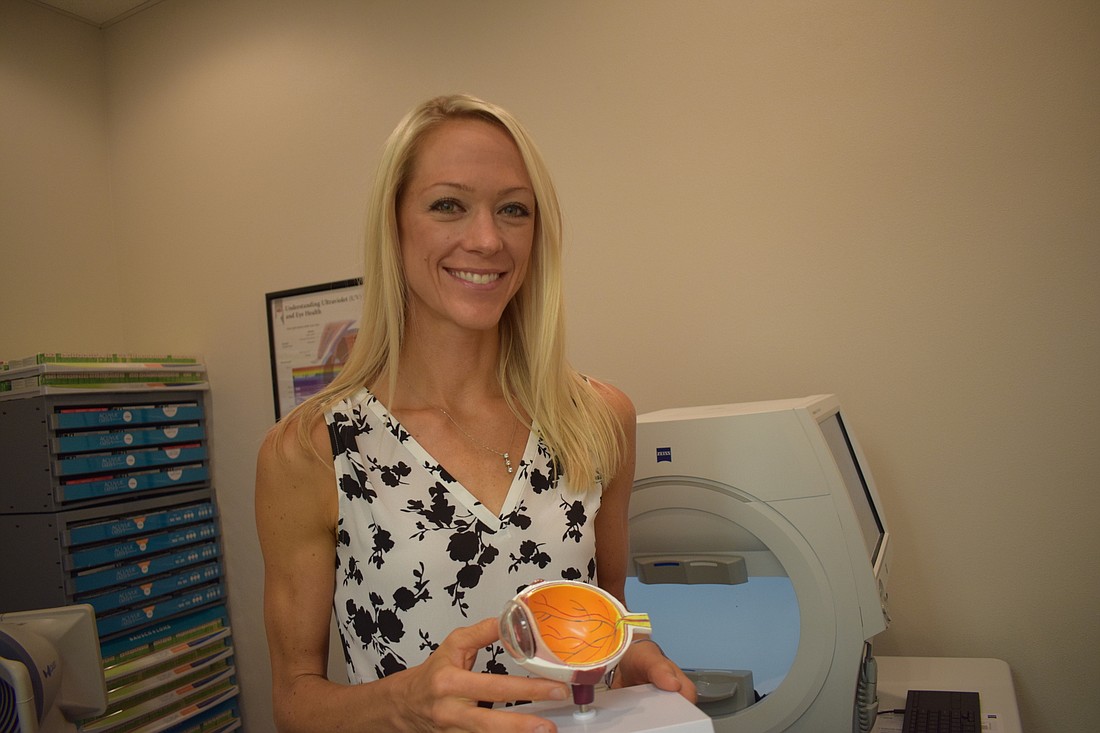- July 26, 2024
-
-
Loading

Loading

Everyone knows your eyes change as you age, but did you realize some conditions can be prevented or slowed while others are simply inevitable?
Signs of common eye conditions — glaucoma, cataracts or presbyopia — often begin in an individual’s 40s or 50s because eyes physically change as you age.
For example, the eye’s lens begins to harden, and the retina becomes cluttered with “cellular trash” that impacts vision.
Local optometrists Dr. Ashley Masuga, of InFocus Family Eyecare, and Dr. Troy Bedinghaus, of Vision Source Signature Eye Care, share some of the most common conditions you are likely to experience as you age.
Presbyopia
Presbyopia is a fancy way of saying you lose your close-up vision. Generally, this type of vision loss begins around age 40 and progresses through age 55.
“That’s the biggest one we associate with age,” Bedinghaus said. “The lens inside the eye stops flexing, and the muscle that makes it flex just isn’t working as [well].”
Individuals experiencing presbyopia might initially think they need more light to see well or feel eye strain and fatigue. They’ll begin to hold things at a distance, gradually farther and farther away.
It might also take longer to shift focus from one object to another.
Reading glasses are helpful, and it’s best for individuals to be checked by an optometrist to determine if the vision loss is similar in both eyes. If the difference is too drastic, reading glasses are not always recommended.
Masuga said for those who wish to avoid reading glasses, there now are multifocal contact lenses available.
Masuga and Bedinghaus noted presbyopia is not preventable.
Cataracts
Even your dog can get cataracts, but what does it mean? As you age, the internal lens of the eye becomes cloudy and gets thicker each year. That means less light gets into the eye as well. Cataracts increase in your 50s and 60s until, typically, in your 70s, you simply can barely see at all.
Early signs are a halo effect — much like when you look at the sun, look away and see circles — and trouble with night vision.
Masuga said UV light can speed up development of cataracts, so protecting your eyes is important.
“We’re all going to have one,” Masuga said. “It’s a natural change of the eye.”
Fortunately, cataracts can be corrected with surgery, and once a surgery is completed, you won’t have to have it repeated, she said.
Glaucoma
Masuga calls glaucoma the “silent blinder” because many people do not realize they have a problem until their vision is gone permanently.
The eye essentially is a circular shell filled with fluid and gel. Fluid is pumped in and out of the eye, and when the pump stops working correctly, pressure begins to build. This can damage the nerve connecting the eye to the brain.
“The pressure has to be awful high for you to feel it,” Bedinghaus said. “You really have to depend on the doctor [for diagnosis]. It happens so slowly you don’t notice it.”
In the early stages, there are no symptoms, but gradually, individuals begin to lose their peripheral vision.
Masuga said catching glaucoma early is critical for slowing its progression. Treatment typically consists of eye drops that help regulate pressure in the eye.
Early signs of glaucoma can be found during an eye exam as early as your 40s, but typically, the problem develops at 50 or later.
Masuga said the condition is largely genetic, so individuals with a family history of glaucoma should have their eyes checked regularly, particularly after age 40 or if experiencing vision loss.
Dermatochalasis
Dermatochalasis sounds complicated, but it’s a simple condition. It’s when the hooding of your upper eyelid begins to droop, thus pushing down on your eyelid and impacting vision.
If you always seem to be lifting your eyebrows up, or if your eyelids look uneven when you look into the mirror, you might have dermatochalasis.
Typically, the condition is seen in individuals 60 and older.
Macular degeneration
Macular degeneration is a severe loss of central vision caused by the buildup of a protein, called drusen, in the retinal lining of the eye.
Early signs are distorted vision or skipping letters while reading.
The most common form, called “dry” macular degeneration, is the thinning of the retina, while the more severe, less common form (20%) is “wet.” It refers to the leaking of blood vessels or new growth of blood vessels in the eye.
Studies have found the condition is largely genetic but also that a healthy diet can have a significant impact in development and progression of the disease.
Masuga said it’s best to eat a healthy diet rich in dark leafy greens and colorful vegetables.